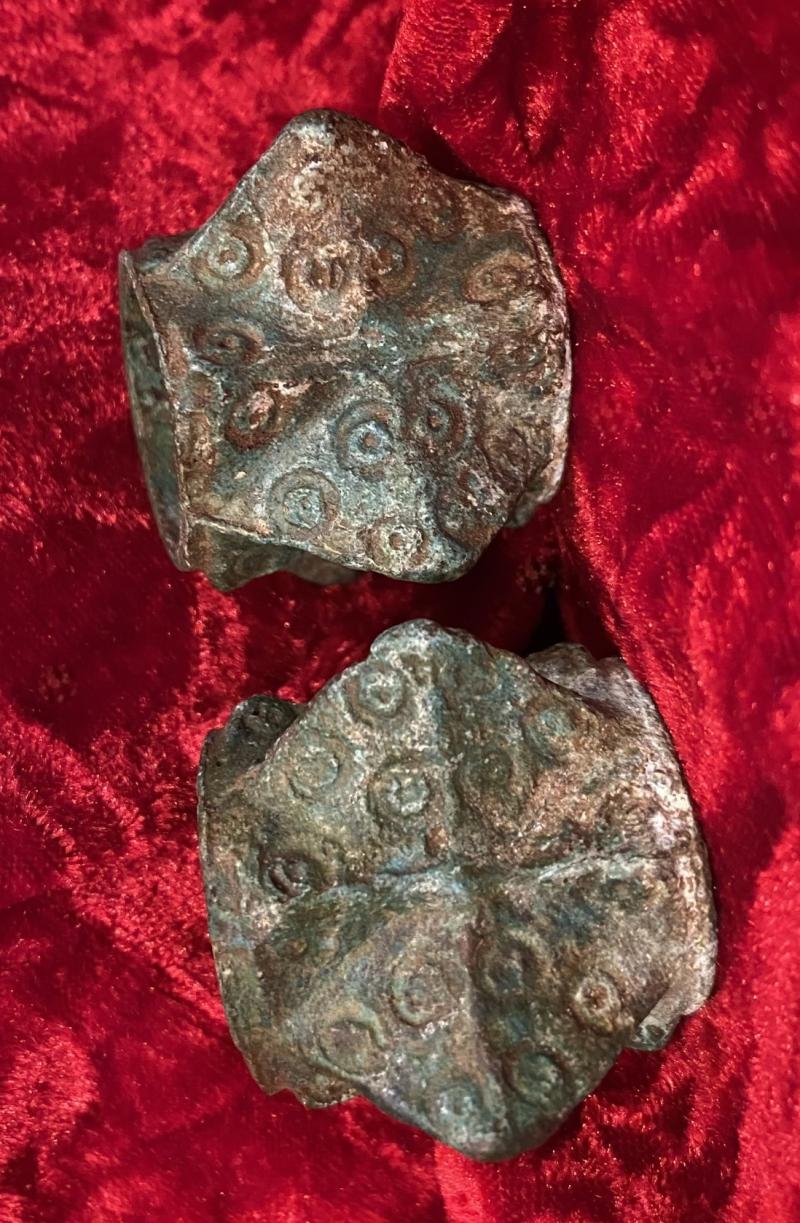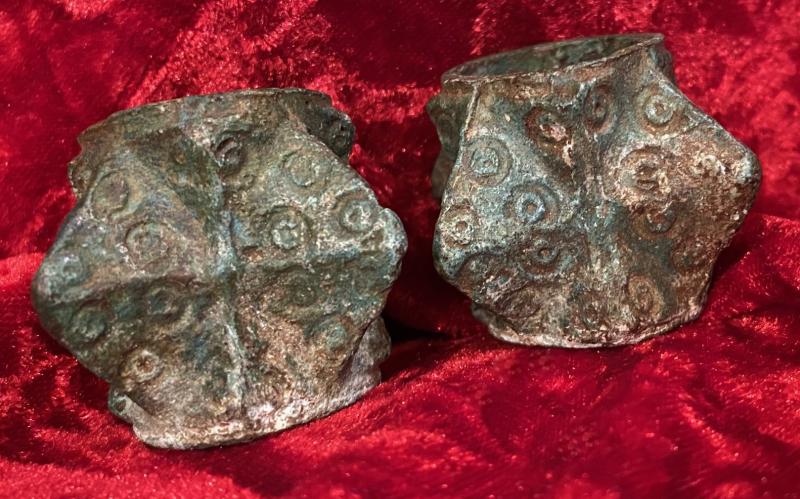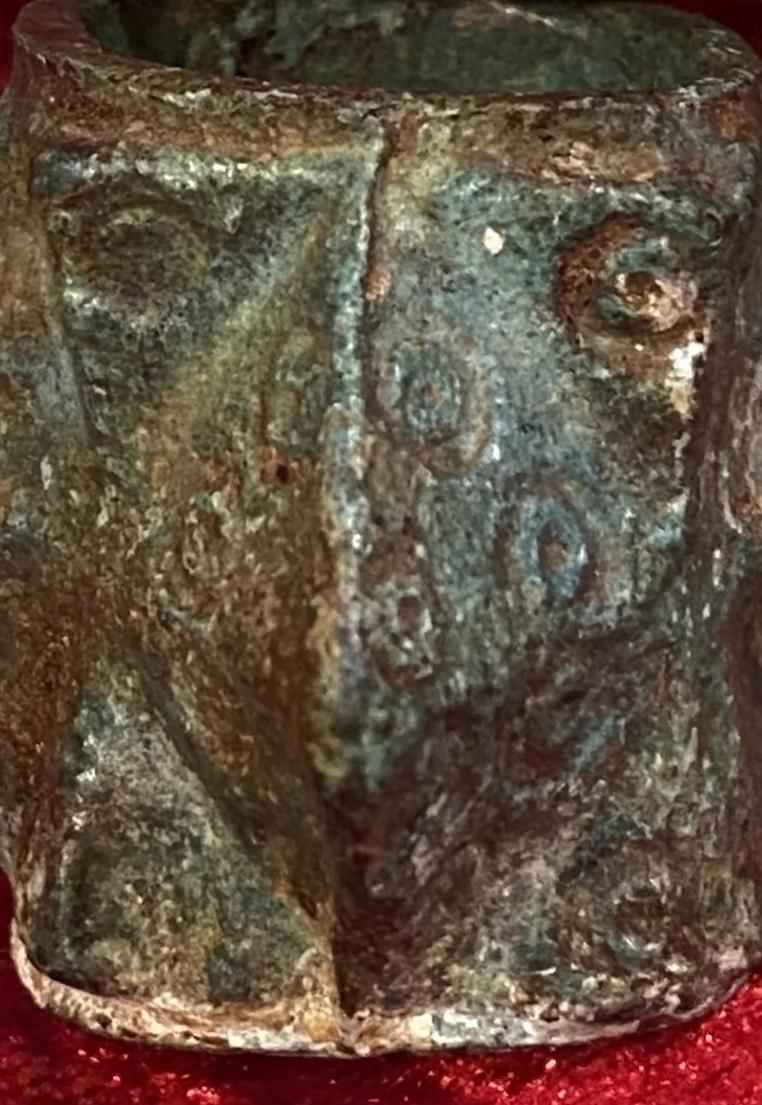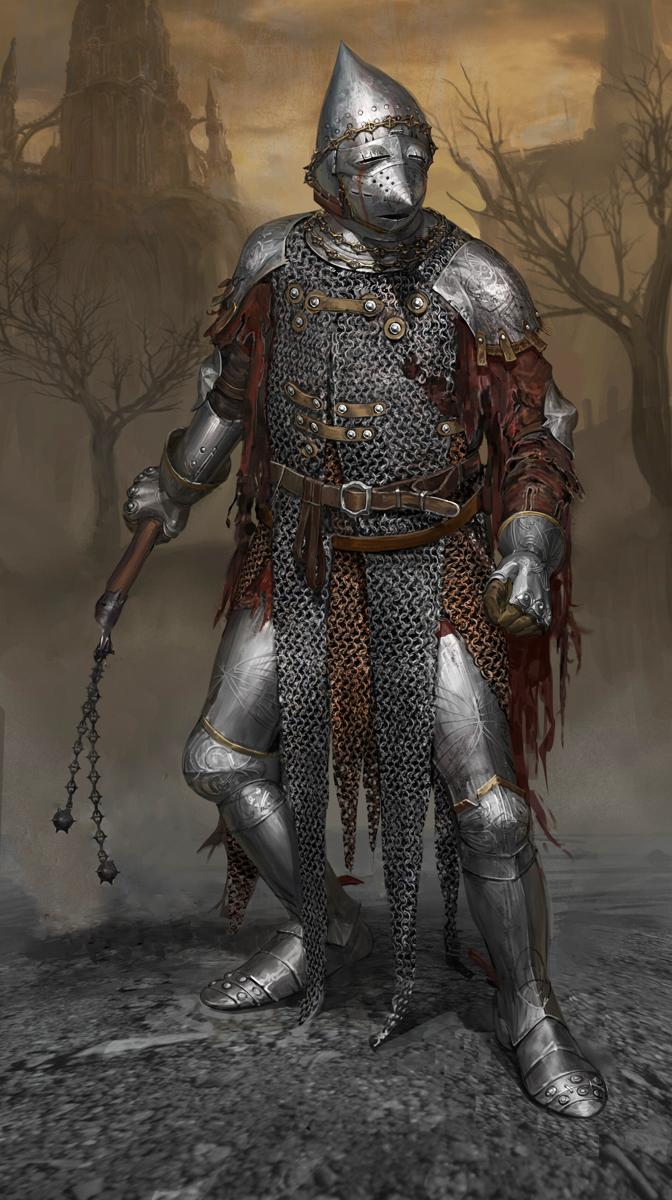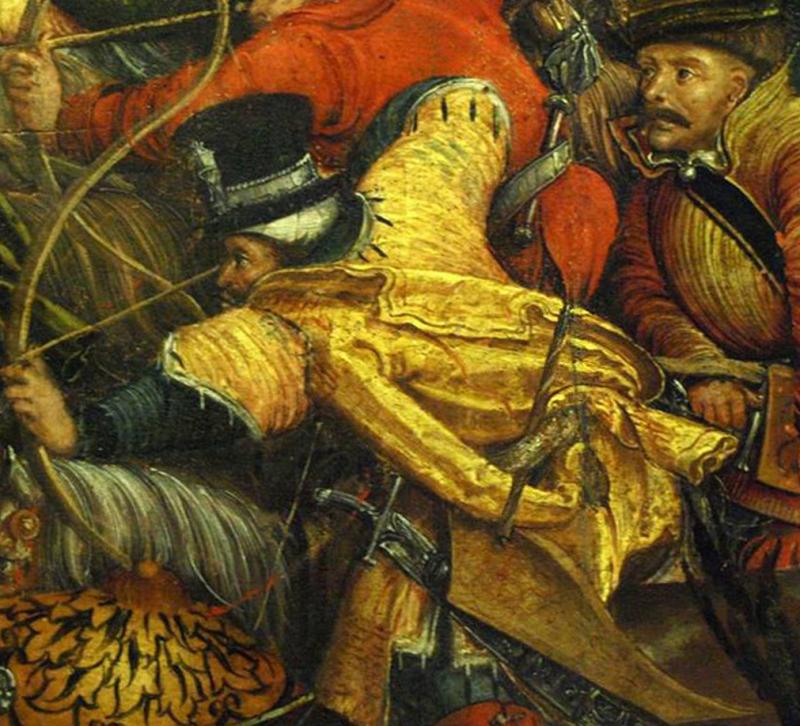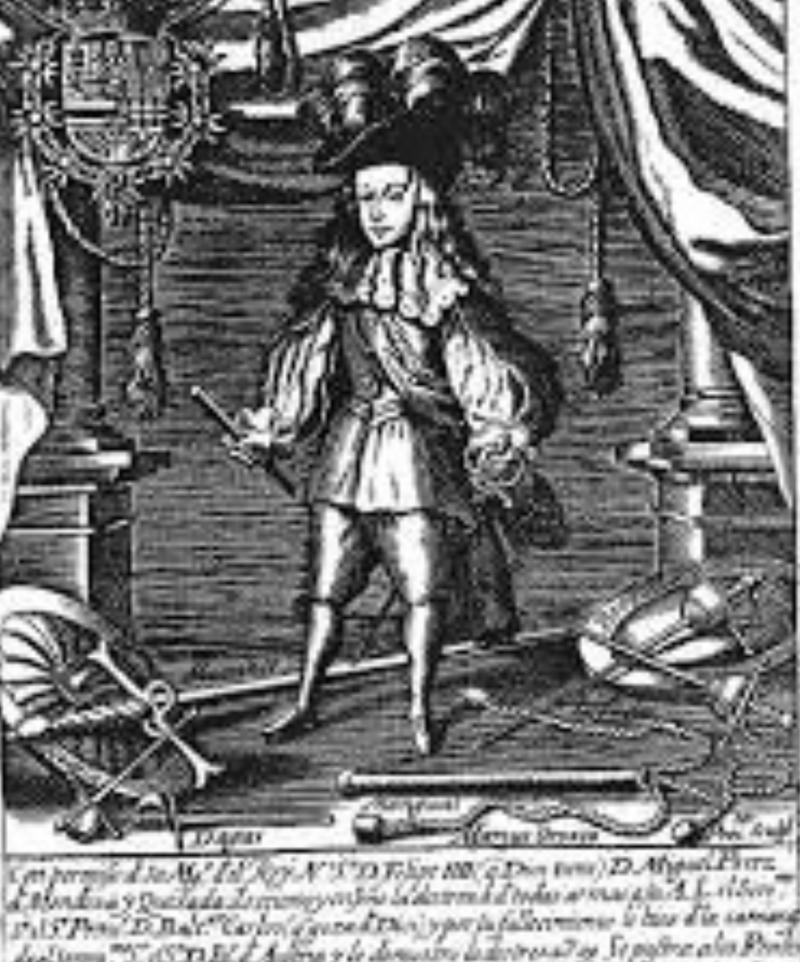A Rare Pair of 14th- 15th Century Medeavil Bronze Winged Polygonal 'Raven's Head' Mace Heads Likely Twin Headed Flail Mace, Mongol Invasion Period to Vlad 'The Impaler' Dracul’s Knight’s Order of The Dragon Period
Cast bronze and each mace head had four ravens heads that can be viewed from both above and upside down, below, creating eight ravens per mace. The remaining surfaces are decorated in the circular ‘all seeing eye’, or ‘evil eye’ pattern, that has been used since the time of the ancient Greeks as a feature to ward off evil spirits. When used by the Knight hussars they were called a kisten, and the double headed flail mace were adopted by the hussar knights from those used by Mongols, Turks and Tartars in their invasions into Eastern Europe in the 14th century.
The eyes design creates a zoomorphic design of several back to back ravens heads. We have read of the notorious 'Raven's Head' maces for many years, and more often they appear today in fantasy role play games, but this may be the very first, original, 14th century examples we have ever had the privelege to see and own.
Together, the wolf and raven embody the Mongol or Turkic warrior as he saw himself: a ferocious, predatory being who hunts his enemies, raiding is inherently a predatory action, after all. In addition, the connection of these animals to warfare in the Mongol mindset is also reinforced since both the wolf and raven appear in the aftermath of battle to feed on the dead.
Vlad Dracul of Transylvania inspired the tales of the vampire of legend, named "Dracula". That evolution of Dracul, recalls only the character from the 1897 novel by Bram Stoker, dramatically and memorably realised by Bella Lugosi, in the eponymous 1931 Hollywood horror film, and then followed by all too numerous actors since, including one of the very best, Gary Oldman. However, behind the popular myth lies the genuine historic ruler Vlad III Dracula "the Impaler" (1431-76), Prince of Wallachia in what is now Romania, a vassal of the Hungarian kings. Voivode is the medieval Romanian term for a regional commander, which position Vlad held intermittently in addition to his princedom (1448, 1456-62 and 1476), and the name "Dracula" is a diminutive derived from the Imperial Order of the Dragon, the order of knights to which Vlad and his father, Vlad II (1390-1447) commanded. He ruled his military kingdom of Wallachia southern Romania with a heavy and blood-soaked fist. To not only the Turks but also to many of his own countrymen he was Vlad The Impaler, Vlad Die Tepes (pronounced Tee-pish). Determined not to be overtaken by the intrigue of an intriguing political underhandedness, in a world in which princes fell daily to smiling, hypocritical "allies," paranoia among the aristocracy was, and probably needed to be, utmost in a sovereign's disposition. Dracula built a defence around him that dared not open kindness nor trust to anyone. During his tenure, he killed by the droves, impaling on a forest of spikes around his castle thousands of subjects who he saw as either traitors, would-be traitors or enemies to the security of Romania and the Roman Catholic Church. Sometimes, he slew merely to show other possible insurgents and criminals just what their fate would be if they became troublesome.
A flail mace avails the user extra reach used on horseback. Unlike a sword or haft mounted mace, it doesn't transfer vibrations from the impact to the wielder. This is a great advantage to a horseman, who can use his horse's speed to add momentum to and underarmed swing of the ball, but runs less of a risk of being unbalanced from his saddle.
It is difficult to block with a shield or parry with a weapon because it can curve over and round impediments and still strike the target. It also provides defense whilst in motion. However the rigid haft does have the advantage as the flail needs space to swing and can easily endanger the wielder's comrades.
Controlling the flail is much more difficult than rigid weapons. On a Flail it had the name of a Scorpion in England or France, or sometimes a Battle-Whip. It was also wryly known as a 'Holy Water Sprinkler'.
King John The Ist of Bohemia used exactly such a weapon, as he was blind, and the act of 'Flailing the Mace' meant lack of site was no huge disadvantage in close combat. Although blind he was a valiant and the bravest of the Warrior Kings, who perished at the Battle of Crecy against the English in 1346. On the day he was slain he instructed his Knights, both friends and companions, to lead him to the very centre of battle, so he may strike at least one blow against his enemies. His Knights tied their horses to his, so the King would not be separated from them in the press, and they rode together into the thick of battle, where King John managed to strike not one but at least four noble blows. The following day of the battle, the horses and the fallen knights were found all about the body of their most noble King, all still tied to his steed.
During the Middle Ages metal armour such as mail protected against the blows of edged weapons. Solid metal maces and war hammers proved able to inflict damage on well armoured knights, as the force of a blow from a mace is great enough to cause damage without penetrating the armour. Though iron became increasingly common, copper and bronze were also used. Pictures in the gallery, some medieval, showing them used in combat. The mace heads are approximately the size of a walnut.
Detail from Battle of Orsha painting, 1520–1534 photo 6 in the gallery. With Lithuanian hussar in yellow tunic with 'kisten' the flail mace in his belt.
Another variety of multi headed flail mace is the Iberian flail or mangual. See picture 7 in the gallery. This can be seen below at the feet of the figure on the frontispiece of the Handbook of the True Skill of Arms in Thirty-Eight Assertions by Miguel Perez de Mendoza y Quixada, published in 1675. This weapon was a specialized armament meant primarily to oppose rapiers and perhaps two handed swords like montante in combat, the figure standing amongst an armoury of weapons including a zweihander great sword, a maine gauche, numerous swept hilt and cup hilt rapiers, and at his feet, a multi chained mace battle-whip or mangual. Picture in the gallery is another a capture taken from a Renaissance painting
Code: 24822
2795.00 GBP


